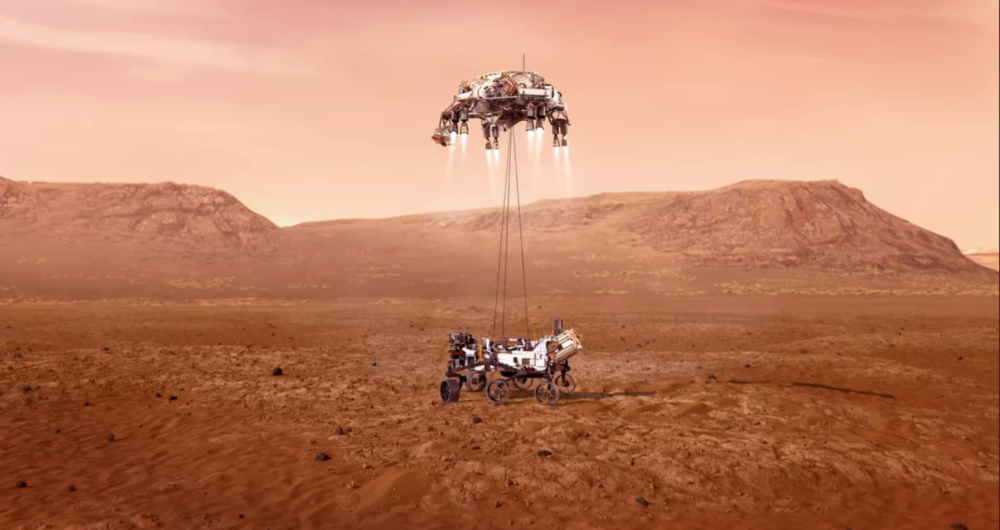The NASA landing systems had “performed flawlessly”, said Matt Wallace, the deputy project manager for the rover, according to the Guardian.
Almost seven months after its launch from Cape Canaveral, The NASA Perseverance rover landed as planned in the area of the Martian crater Jezero on 18 February at 20:43 GMT.
The machine landed with seven devices designed to research the planet’s surface and subsurface structures and their chemical analysis.
It will also measure temperature, wind speed and direction, size and shape of dust particles.
Other tools verify the technology of oxygen production from atmospheric carbon dioxide and to search for organic compounds.
The rover has more than 20 cameras to acquire panoramic images.
In addition, two microphones will allow us to hear Martian wind and other sounds.
With the Perseverance mission, an Ingenuity helicopter arrived on Mars to test whether it is possible to fly on Mars with a propeller.
The Perseverance rover’s main goal is to look for signs of past or present life on the surface of Mars.
Previous missions discovered that Mars’ conditions had once been theoretically suitable for life, and even that water flowed on the surface of Mars.
In addition to searching for life, the Perseverance spacecraft will also carefully select Mars rock and soil samples and store them in special containers.
In the future, a robotic mission will pick up these samples from Mars and deliver them to Earth for scientific examination.
“We want to send these follow-up missions in 2026 so that we can get the samples back on Earth in 2031,” said Dr David Parker, the director for robotics and human spaceflight at ESA.
NASA has succeeded in eight of their nine landing attempts on Mars so far.
Watch the landing at NASA YouTube channel.
Image source: NASA Artwork – Perseverance lands on Mars




